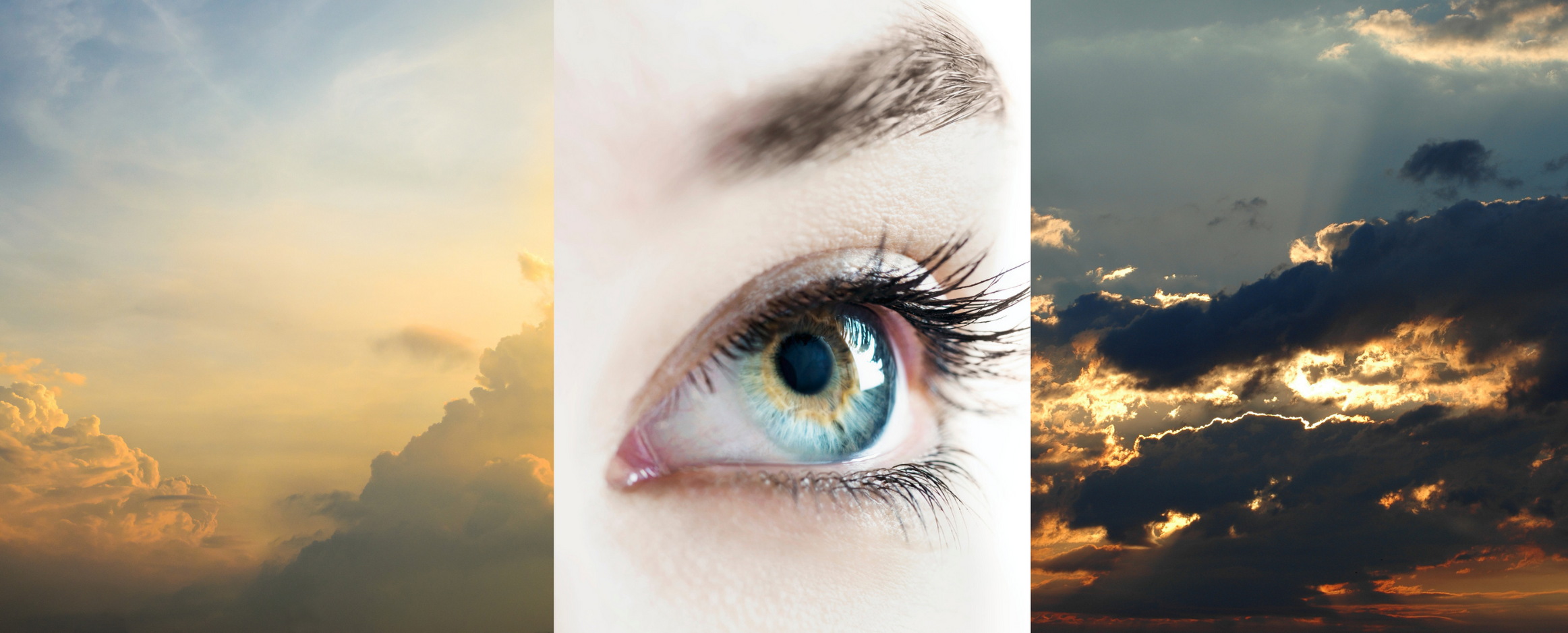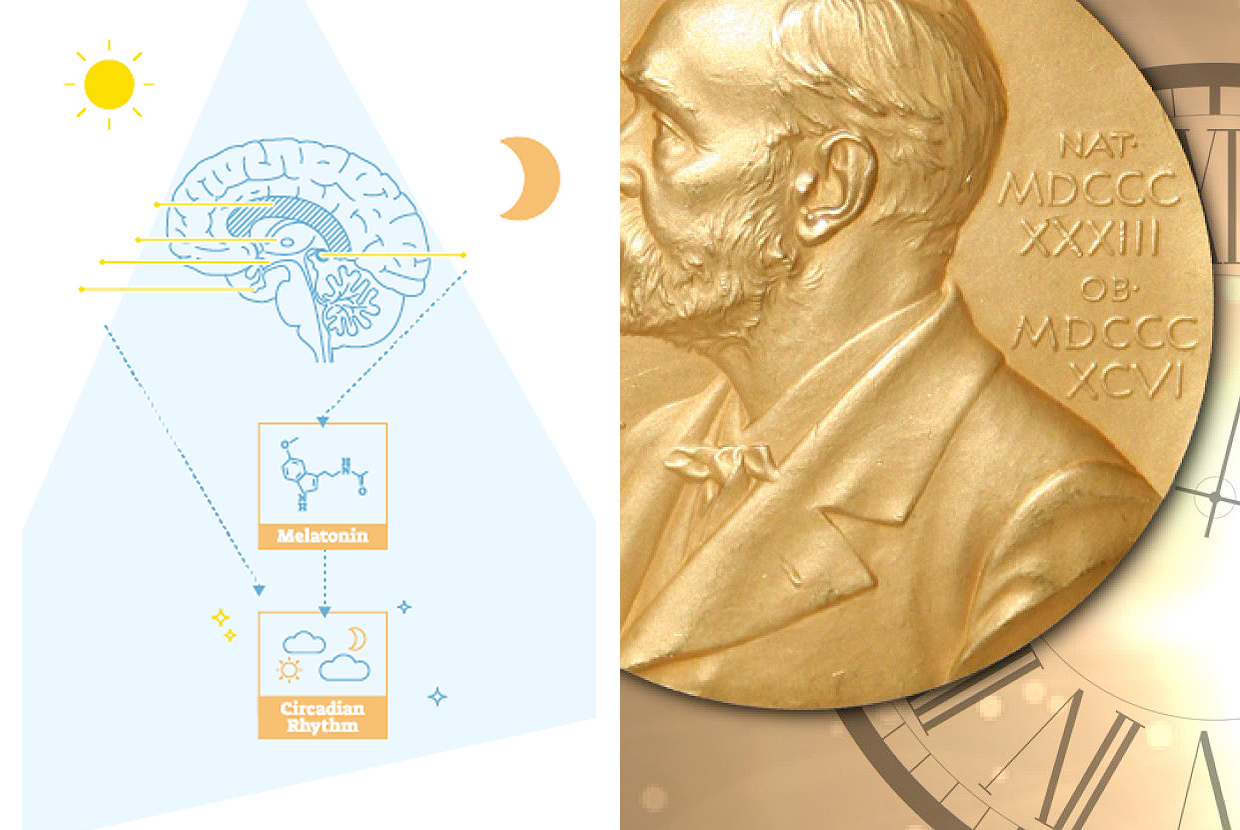
Blog
Nobel Prize Winning Circadian Science: Explained
On October 2nd, 2017, the Nobel Prize in Phsyiology or Medicine was jointly awarded to Dr. Jeffrey C. Hall, Dr. Michael Rosbash and Dr. Michael W. Young for their decades long research and numerous discoveries on the molecular mechanisms that control our circadian rhythms and impact our well-being. These discoveries require a bit of unpacking to explain.

How Long Have We Known About Circadian Rhythms?

Scientists have known about internal clocks since the 18th century, when a French astronomer observed that mimosa plants kept in total darkness could still unfurl their leaves in time with the sun.
Later, in the 1970s, Seymour Benzer and Ronald Konopka first identified a gene they called “period”. They hypothesized that this period gene seemed to control the circadian rhythm of fruit flies because they saw mutations in that gene disrupting the flies’ circadian rhythms. At the time, they were unable to isolate the gene or understand how it worked. It was technically an unknown gene.
It wasn’t until Hall, Rosbash, and Young experimented on the period gene that anything was known about its function. In 1984, they isolated the gene and saw how it is used to make the protein PER that builds up during sleep. They also discovered several other proteins that regulate and stabilize this system – proteins that make up the interconnected loops that trigger protein input, synchronization, and output.
How Do Genes And Proteins Create The Circadian System?
The whole mechanism is dynamic and self-sustaining, what scientists refer to as an “oscillation”: a substance builds itself up then shuts off its own synthesis on an autonomous schedule.
Think of the Japanese bamboo fountain that fills with water and tips itself out when it is full so that it can fill back up again. The PER protein can prevent its own synthesis by binding to the protein TIM (discovered by Young in 1994), which allows both proteins to enter the nucleus of a cell and block the signal that triggers period gene production. That blockage is like the tipping of the bamboo – it happens at a predictable moment in time.
Here’s where it relates to light and human behavior. Normally, PER follows TIM into the nucleus at night. However, in their experiments, these scientists exposed the fruit flies to light. This caused TIM to rapidly degrade. PER was unable to enter the nucleus by itself, and thus could not stop the code from producing PER and TIM.
But how exactly does light degrade TIM? Another protein called CRY comes into play. CRY is a photoreceptive protein in fruit flies. It binds to TIM only in the presence of light, and causes it to break down. Normally this happens when the sun comes up, but light exposure at night can confuse the mechanism and delay regulation by a matter of hours.
There are at least seven other proteins involved, but these are the basics.
How Does The Circadian Rhythm Impact Sleep?

For us, and for most other multicellular organisms, this means that our circadian rhythms have evolved to a 24-hour day on Earth. That’s why we get jet lagged and why using bright screens at night disrupts our sleep. Interestingly, this is also why sleep disorders are common among family members. Our ability to regulate sleep is largely determined by genes.
Over time the three scientists used fruit flies to isolate a gene that controls the rhythm of a living organism’s daily life. Dr. Hall, Dr. Rosbash and Dr. Young were “able to peek inside our biological clock, helping explain how plants, animals and humans adapt their biological rhythm so that it is synchronized with the Earth’s revolutions,” the Nobel Prize committee said. By examining the internal workings of fruit flies, these investigators helped determine that the gene they were analyzing encoded a protein that accumulated in cells at night, and then degraded during the day.
Over decades of research, these scientists identified the mechanisms governing the clockwork inside the cell, shedding light on the biology of humans and other multicellular organisms whose biological clocks function on the same principles.
What's New In Circadian Science? Why Did These Three Researchers Win The Prize?
The work of Hall, Rosbash, and Young is crucial, the Nobel committee said, because when our lifestyles and our internal clocks are out of sync, we are more at risk for various diseases. Circadian rhythm impacts our well-being, our behavior, our energy literally every second of our lives.
After the committee’s announcement on Monday, October 2, Nobel Committee Chair Professor Anna Wedell explained their decision to nobelprize.org reporters.
Scientists have long been aware of the circadian rhythm, but not how it works. Before the research of Hall, Rosbash, and Young, it was understood that the circadian system’s regulation was endogenous (not external). Scientists were vaguely aware that its regulation could be influenced genetically, and that external factors may play a role – but the exact nature of that process was a mystery. “Nothing was known about the mechanism,” says Wedell.
Thanks to Hall, Rosbash, and Young, we now understand this highly complex, highly sophisticated self-regulation of genes and proteins. This system communicates environmental factors to the various body functions that need to know what to do and when to do it. “It’s a detailed molecular mechanism but it explains how we are adapted to the planet,” says Wedell, “[their work] has opened and enabled so many questions.”
Wedell stressed this fact: the knowledge these three scientists have brought us is merely the beginning. We’ve correlated behavioral health, sleep health, light exposure, disease – but we haven’t yet been able to pinpoint exact treatments based on circadian science. “All we’ve had are correlations,” she says. The implications for our health have yet to be proven. “But they’ve provided tools for that.”
Often at Visa Lighting we get asked to talk about circadian lighting and how it links to our body clock. The truth is that there are ongoing studies linking genes, photoreceptors, and more human insights on our circadian rhythm every day. These discoveries, like lighting, will impact everyone. As we continue to learn more, we are pleased to share it with you. We are amazed by these winners and send a big congratulations their way!
More information can be found from the New York Times and from the Nobel website
